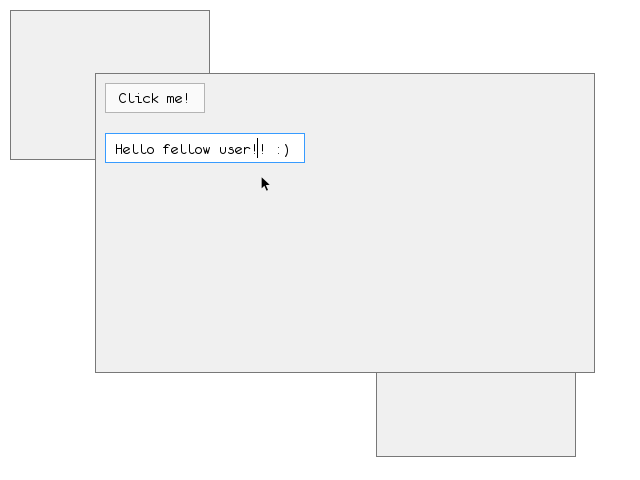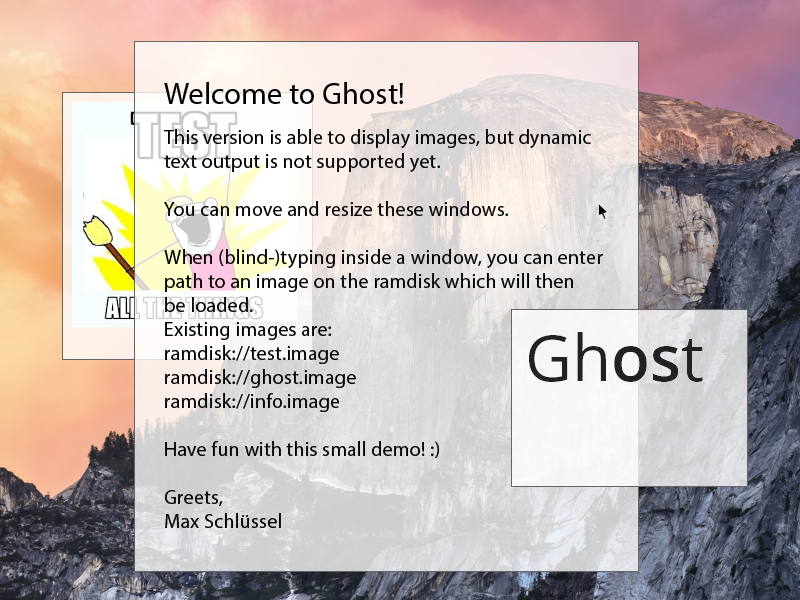Capri & some eye candy 2014/09/29, 20:00:00
Quite some stuff happened in the last month. My development mostly focused on Capri, the build tool used for Ghost (will soon create a subpage here to allow everyone to use it). As it basically has all the features that you would want from a simple script language, the decision was made to publish it as a multi-purpose scripting language, not only as a build tool. More info comes soon.
I rewrote some parts of the window manager, that gives much better performance now. Each windows has its own buffer now, and may request when it needs to be repainted. The log output was reduced and seperated in debug, info and error levels. This makes booting even faster and less verbose, except you need the information. The text rendering was also cleant up a little, and I wrote the first usable text component:

Once the basic components like buttons, combo-boxes, scrollbars and more are implemented, I'll write a UI programming interface to allow programs to create their own interaces. Stay tuned!
